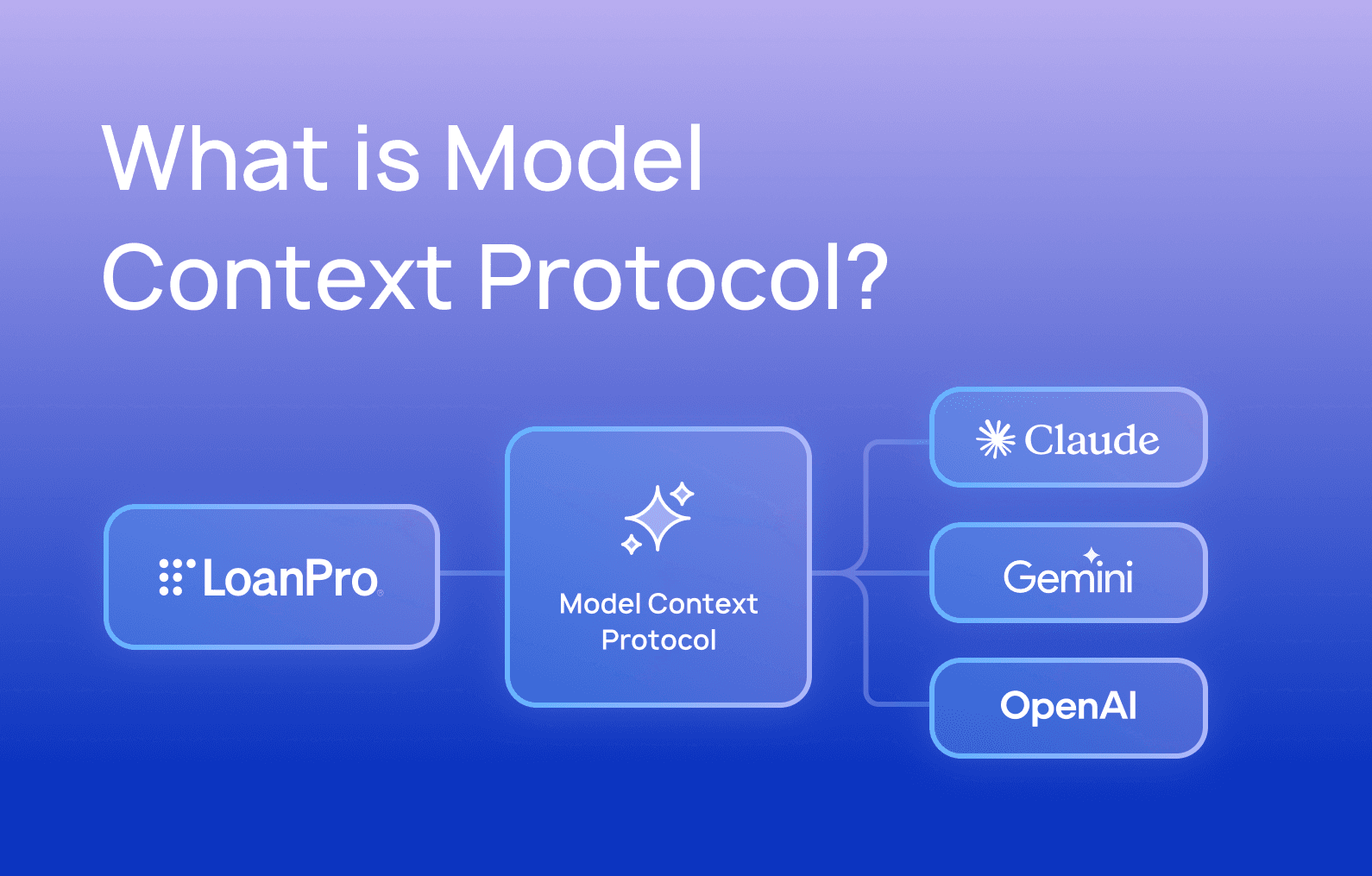The 3 C’s of credit in an age of modern underwriting
The 3 C’s of credit—character, capacity, and collateral—are a widely-used framework for evaluating potential borrowers’ creditworthiness. By analyzing each applicant through those three lenses, an underwriter can better predict which borrowers will repay on time, and which are more likely to go delinquent or even default on their debt.
While many banks, credit unions, and other credit providers still incorporate the 3 C’s into their underwriting model, most have also taken steps to modernize their loan origination, replacing human judgements with data-driven algorithms and testing.
Given that modernization, do the 3 C’s still hold up as a conceptual framework? In this article, we’ll examine each of the 3 C’s (as well as alternate models, like the 5 C’s or the 3 R’s) and discuss its relevance to modern credit and lending operations, including the tools and strategies that leading credit providers use to modernize their underwriting and decisioning.
What are the 3 C's of credit?
Character – borrower trustworthiness
The first C of “character” takes on a more specific definition than the general meaning of a person’s values and beliefs. Most lenders, for example, don’t really care if you’re a poor sport when your team is losing or if you gossip behind your friends’ backs—sportsmanship and kindness are good qualities, but not necessarily accurate predictors for repayment.
The key measures of character in credit underwriting come down to financial history, positive identification, and other behavior patterns.
- Traditional creditworthiness metrics. How a person has used and repaid credit in the past is a strong indicator of future behavior. Credit scores (like FICO and VantageScore) take both into account, not merely subtracting points for missed payments, but more importantly adding them as borrowers use credit responsibly.
- Clear identification. Healthy credit scores mean nothing if they don’t belong to the person you’re lending to. Positively identifying borrowers is a crucial aspect of both risk management and compliance strategy.
- Other red flags. Creditors may pull employment data or criminal records when assessing creditworthiness. Without moralizing any behavior, it often comes down to the fact that someone who is frequently unemployed or incarcerated will have difficulty repaying debts.
Relevance and improving underwriting and decisioning
“Character” may sound quaint in an age of machine learning and predictive algorithms, but what those modern tools really aim to do is quantify character so it can be properly weighed within an underwriting model.
Modern credit platforms don’t do away with measuring character; they optimize it. Through automation, credit underwriting can be streamlined by combining traditional character metrics with new and alternative data sets. This automation allows for a more efficient and comprehensive assessment of a borrower's creditworthiness, ensuring that character remains a key factor in the lending process.
Capacity – ability to repay
Capacity refers to whether a person, company, or other organization is able to repay the debt they take out on the schedule set out in their lending agreement. It’s a measurement of real-world cash flow put into the context of specific financial products.
Whereas measures of character focus on trustworthiness, measurements of capacity focus on the applicant’s balance of income and expenses. A person with a strong credit history on their consumer lending products still might not qualify for loans with large credit limits, like a small business loan, if they’re unable to demonstrate the earnings that would be necessary to repay the debt.
Several considerations factor into a typical measurement of capacity:
- Income and expenses. Whether considering a business’s net revenue or an individual consumer’s income and expenses, most lenders don’t have the risk tolerance for any entity without steady and predictable financials.
- Pre-existing debt. Credit providers may be more sensitive to an applicant’s debt than to other expenses, particularly any debts that are secured with liens. Here, capacity overlaps with the third C, collateral, as credit providers assess the likely outcomes in the event that they are unable to repay their debts.
- Future capacity. Credit providers might also consider how a borrower’s capacity might evolve over the course of the credit product. For example, a high school graduate might not have the income to pay for their student loans, but the loan enables them to earn a higher income through completing education and training. Similarly, new businesses may rely on credit for years until investments in their infrastructure and personnel begin to pay off. In both cases, credit providers may look at metrics like grades or previous business performance to estimate future repayment capacity.
Relevance and improving underwriting and decisioning
While a traditional FICO score remains a sound starting point for assessing repayment capacity, credit providers can also modernize their metrics with other data.
Open banking, for example, is poised to change how credit providers measure capacity. Between 2026 and 2030, all but the smallest depository institutions will become subject to the 1033 rule’s open banking requirements, and market pressures from consumers may encourage banks to adopt it even sooner.
With more direct, real-time access to borrowers’ cash flow and financial behavior, credit providers will be able to modernize their risk assessment models, allowing them to confidently lend to a wider range of customers than was previously possible.
Collateral – securing the loan
The third C, collateral, refers to any assets that the credit provider could repossess and resell. The most typical collateral items are homes and automobiles, but anything can be used as collateral as long as it can reliably be recovered and resold.
Repossessing a collateral item may be easier said than done, as every asset poses its own challenges for recovery. Repossessing a vehicle or home are both simple enough in premise, but are regulated by a web of consumer protections that vary from state to state. Smaller assets might be used as collateral at pawn shops and other small-dollar lenders, who typically keep those objects in their possession until the debt is repaid. And intangible assets, like stocks and bonds or cryptocurrency, may require special technical infrastructure to transfer them from party to party.
As credit providers assess the risk associated with a particular product and applicant, collateral factors into their decision in several key areas:
- Unsecured credit products. Not all credit products are secured, but that doesn’t mean collateral isn’t a factor in those credit decisions. The lack of collateral on an unsecured loan inherently means it is a higher-risk product, and to mitigate that risk, credit providers will typically deny access to less reliable borrowers.
- Specialization in recovery. Because the process for recovering collateral can vary wildly from asset to asset, credit providers who secure accounts typically specialize in more narrow, specific verticals.
- Pre-existing liens. If another lender has already filed a lien against a collateral item, they would have a stronger legal claim to recover that asset in the event of a bankruptcy. This is especially true of tax liens, which generally supersede others.
- Preventative rather than reactive. Repossessing and reselling collateral isn’t always easy, and the money earned may not cover the money lost. Rather than using repossession as a reactive tool to liquidate delinquent accounts, credit providers might see better success strategically stressing the possibility of repossession to encourage borrowers to keep up with their payments.
Relevance and improving underwriting and decisioning
While some commentators and thought leaders have downplayed the importance of collateral in an age of digital-first lending, they may be neglecting a key pillar of credit access and upward mobility. An applicant with bad credit history has few options for handling unexpected expenses and liquidity issues, let alone tools for making major investments like a home, first vehicle, or education and training. If industry trends or regulatory pressures limit the supply of secured credit products, those borrowers with the fewest options will have even fewer.
As economic uncertainty continues to affect consumers and businesses, secured credit remains an important tool for extending credit and financing opportunities without overexposing credit operations to risk.
Drawing from experience with secured lending, modern credit platforms have built specialized tools for managing collateral, as well as underwriting algorithms that factor collateral into credit decisions. Using those tools to streamline a reliable recovery process further reduces the risk of secured credit.
Alternate frameworks for credit risk analysis
The 3 C’s of credit may be a widely-used conceptual framework, but they’re not without criticism or competitors. While some might dismiss the 3 C’s model as an oversimplification, others have tried to rectify it through their own modifications, adapting the model to better fit specific industries or more recent technological developments.
What are the 4 C’s or 5 C’s of credit?
While the traditional 3 C’s framework of character, capacity, and collateral is most widely known, alternative models have arisen either adding or substituting other C’s to that list. The typical contenders for a fourth or fifth C are capital, conditions, and contactability.
Capital refers to a borrower’s financial assets. Capital is often substituted for collateral in alternative models, as it expands the scope of the assessment from assets that secure the account to a wider array of assets owned by the borrower. This substitution is done under the logic that if the borrower’s normal income is disrupted, they would be able to sell these other assets to make payments. While this does provide a more comprehensive picture of the borrower’s financial situation, it also has potential shortcomings: If the account is not legally secured with collateral, there’s no guarantee that a borrower will sell their assets. And even if they did intend to sell them and repay their debts, their financial assets may devalue after origination.
Conditions refer to any factors outside of the applicant’s control that may inadvertently affect their ability to repay their debt. A startup owner might repeatedly be denied requests for funding during times of economic uncertainty, but later be accepted without any changes to their own operations, all due to shifts in the market and prospects for their business. Conditions can be seen as a broader view of capacity that takes into account market context and changes over time.
Contactability refers to the communication and relationship between the borrower and credit provider. In a traditional financial setting, a community bank or credit union might have more immediate ties to their borrowers than a more distant institution, and thus be better equipped to keep them engaged throughout their account lifecycle. Modern technological developments have helped close that gap, allowing digital-only financial institutions to keep closely engaged with borrowers through online communication.
What are the 3 R's of credit?
Most often used in small business lending, the 3 R’s are another alternative to the 3 C’s framework. Standing for returns, repayment capacity, and risk-bearing ability, these terms focus on extending credit as a form of investing in a business’s productive capacity.
- Returns are a venture’s economic viability. No amount of previous good credit history can make an unprofitable business model work, so B2B credit providers look at actual revenue metrics or proxies in the same industry to predict a business’s returns.
- Repayment capacity is a prediction of whether the business will generate enough money to repay the loan. Whereas returns look at the business’s own profitability, repayment capacity puts those returns back in the context of their debt.
- Risk-bearing ability refers to whether the applicant is poised to handle risks, uncertainties, and unexpected difficulties. A business that’s prepared to endure a few bad quarters is much more likely to succeed and repay their debt in the long run, and thus a better candidate for credit.
Similar to the 3 C’s, the 3 R’s give credit providers a set of core principles for judging creditworthiness. And by focusing on the factors most relevant to business borrowers, B2B credit providers can use the 3 R’s to build predictive models and underwriting algorithms with greater relevance and reliability for their clientele.
Upgrade your underwriting
Whether your operation actively uses a framework like the 3 C’s or simply factors those elements into a more complex algorithm, recognizing and distinguishing the many factors that play into credit underwriting can help you devise a more nuanced and accurate approach to decisioning and product matchmaking.
Implementing that new approach, however, can pose a challenge on rigid systems, requiring lengthy back-end coding and offering limited visibility into how an underwriting model compares with your portfolio’s real-world behavior.
LoanPro's Origination System and partner ecosystem offer decisioning that solves this problem by giving you the flexibility to configure custom credit models without complex coding, all while maintaining full visibility into your underwriting performance.
Want to see how modern lenders use credit in their decision engine? Download our one-pager to see how we integrate adaptive AI models, real-time data enrichment, and automated compliance checks into a seamless origination flow.




